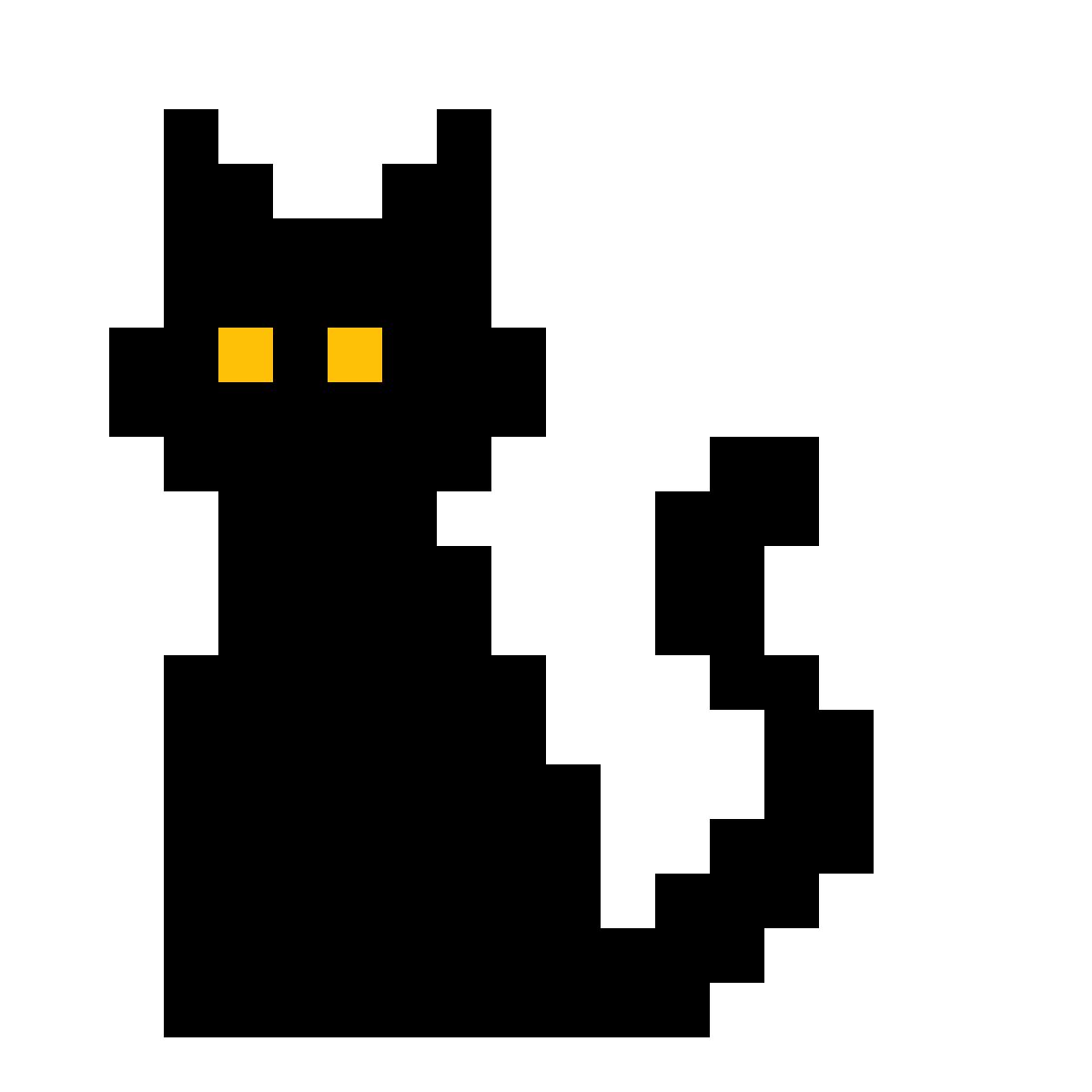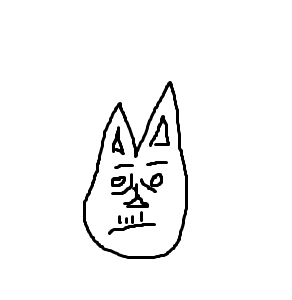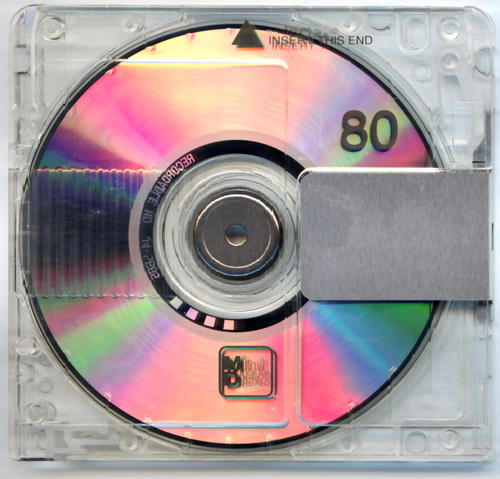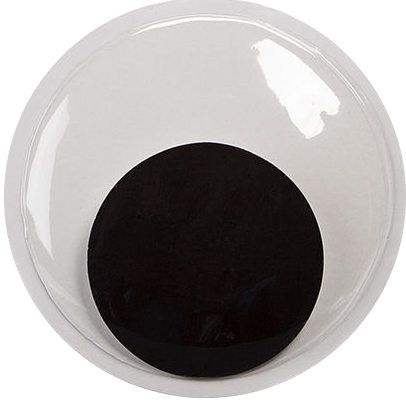0.(9)=0.(3)3=1/33=1
Beautiful. Is that true or am I tricked?
0.3 is definitely NOT equal 1/3.
I guess 0.(3) means infinite 0.33333…. which is equal to 1/3
x=.9999…
10x=9.9999…
Subtract x from both sides
9x=9
x=1
There it is, folks.
Unfortunately not an ideal proof.
It makes certain assumptions:
- That a number 0.999… exists and is well-defined
- That multiplication and subtraction for this number work as expected
Similarly, I could prove that the number which consists of infinite 9’s to the left of the decimal is equal to -1:
...999 = x ...990 = 10x Calculate x - 10x: x - 10x = ...999 - ...990 -9x = 9 x = -1And while this is true for 10-adic numbers, it is certainly not true for the real numbers.
While I agree that my proof is blunt, yours doesn’t prove that .999… is equal to -1. With your assumption, the infinite 9’s behave like they’re finite, adding the 0 to the end, and you forgot to move the decimal point in the beginning of the number when you multiplied by 10.
x=0.999…999
10x=9.999…990 assuming infinite decimals behave like finite ones.
Now x - 10x = 0.999…999 - 9.999…990
-9x = -9.000…009
x = 1.000…001
Thus, adding or subtracting the infinitesimal makes no difference, meaning it behaves like 0.
Edit: Having written all this I realised that you probably meant the infinitely large number consisting of only 9’s, but with infinity you can’t really prove anything like this. You can’t have one infinite number being 10 times larger than another. It’s like assuming division by 0 is well defined.
0a=0b, thus
a=b, meaning of course your …999 can equal -1.
Edit again: what my proof shows is that even if you assume that .000…001≠0, doing regular algebra makes it behave like 0 anyway. Your proof shows that you can’t to regular maths with infinite numbers, which wasn’t in question. Infinity exists, the infinitesimal does not.
Yes, but similar flaws exist for your proof.
The algebraic proof that 0.999… = 1 must first prove why you can assign 0.999… to x.
My “proof” abuses algebraic notation like this - you cannot assign infinity to a variable. After that, regular algebraic rules become meaningless.
The proper proof would use the definition that the value of a limit approaching another value is exactly that value. For any epsilon > 0, 0.999… will be within the epsilon environment of 1 (= the interval 1 ± epsilon), therefore 0.999… is 1.
The explanation I’ve seen is that … is notation for something that can be otherwise represented as sums of infinite series.
In the case of 0.999…, it can be shown to converge toward 1 with the convergence rule for geometric series.
If |r| < 1, then:
ar + ar² + ar³ + … = ar / (1 - r)
Thus:
0.999… = 9(1/10) + 9(1/10)² + 9(1/10)³ + …
= 9(1/10) / (1 - 1/10)
= (9/10) / (9/10)
= 1
Just for fun, let’s try 0.424242…
0.424242… = 42(1/100) + 42(1/100)² + 42(1/100)³
= 42(1/100) / (1 - 1/100)
= (42/100) / (99/100)
= 42/99
= 0.424242…
So there you go, nothing gained from that other than seeing that 0.999… is distinct from other known patterns of repeating numbers after the decimal point.
The explanation I’ve seen is that … is notation for something that can be otherwise represented as sums of infinite series
The ellipsis notation generally refers to repetition of a pattern. Either ad infinitum, or up to some terminus. In this case we have a non-terminating decimal.
In the case of 0.999…, it can be shown to converge toward 1
0.999… is a real number, and not any object that can be said to converge. It is exactly 1.
So there you go, nothing gained from that other than seeing that 0.999… is distinct from other known patterns of repeating numbers after the decimal point
In what way is it distinct?
And what is a ‘repeating number’? Did you mean ‘repeating decimal’?The ellipsis notation generally refers to repetition of a pattern.
Ok. In mathematical notation/context, it is more specific, as I outlined.
This technicality is often brushed over or over simplified by math teachers and courses until or unless you take some more advanced courses.
Context matters, here’s an example:
Generally, pdf denotes the file format specific to adobe reader, while in the context of many modern online videos/discussions, it has become a colloquialism to be able to discuss (accused or confirmed) pedophiles and be able to avoid censorship or demonetization.
0.999… is a real number, and not any object that can be said to converge. It is exactly 1.
Ok. Never said 0.999… is not a real number. Yep, it is exactly 1 because solving the equation it truly represents, a geometric series, results in 1. This solution is obtained using what is called the convergence theorem or rule, as I outlined.
In what way is it distinct?
0.424242… solved via the convergence theorem simply results in itself, as represented in mathematical nomenclature.
0.999… does not again result in 0.999…, but results to 1, a notably different representation that causes the entire discussion in this thread.
And what is a ‘repeating number’? Did you mean ‘repeating decimal’?
I meant what I said: “know patterns of repeating numbers after the decimal point.”
Perhaps I should have also clarified known finite patterns to further emphasize the difference between rational and irrational numbers.
EDIT: You used a valid and even more mathematically esoteric method to demonstrate the same thing I demonstrated elsewhere in this thread, I have no idea why you are taking issue with what I’ve said.
Ok. In mathematical notation/context, it is more specific, as I outlined.
It is not. You will routinely find it used in cases where your explanation does not apply, such as to denote the contents of a matrix.
Furthermore, we can define real numbers without defining series. In such contexts, your explanation also doesn’t work until we do defines series of rational numbers.
Ok. Never said 0.999… is not a real number
In which case it cannot converge to anything on account of it not being a function or any other things that can be said to converge.
because solving the equation it truly represents, a geometric series, results in 1
A series is not an equation.
This solution is obtained using what is called the convergence theorem
What theorem? I have never heard of ‘the convergence theorem’.
0.424242… solved via the convergence theorem simply results in itself
What do you mean by ‘solving’ a real number?
0.999… does not again result in 0.999…, but results to 1
In what way does it not ‘result in 0.999…’ when 0.999… = 1?
You seem to not understand what decimals are, because while decimals (which are representations of real numbers) ‘0.999…’ and ‘1’ are different, they both refer to the same real number. We can use expressions ‘0.999…’ and ‘1’ interchangeably in the context of base 10. In other bases, we can easily also find similar pairs of digital representations that refer to the same numbers.
I meant what I said: “know patterns of repeating numbers after the decimal point.”
What we have after the decimal point are digits. OTOH, sure, we can treat them as numbers, but still, this is not a common terminology. Furthermore, ‘repeating number’ is not a term in any sort of commonly-used terminology in this context.
The actual term that you were looking for is ‘repeating decimal’.
Perhaps I should have also clarified known finite patterns to further emphasize the difference between rational and irrational numbers
No irrational number can be represented by a repeating decimal.
https://www2.kenyon.edu/Depts/Math/Paquin/GeomSeriesCalcB.pdf
Here’s a standard introduction to the concept of the Convergence/Divergence Theorem of Geometric Series, starts on page 2.
Its quite common for this to be referred to as the convergence test or rule or theorem by teachers and TA’s.
I was taught that if 0.9999… didn’t equal 1 there would have to be a number that exists between the two. Since there isn’t, then 0.9999…=1
Not even a number between, but there is no distance between the two. There is no value X for 1-x = 0.9~
We can’t notate 0.0~ …01 in any way.
Divide 1 by 3: 1÷3=0.3333…
Multiply the result by 3 reverting the operation: 0.3333… x 3 = 0.9999… or just 1
0.9999… = 1
In this context, yes, because of the cancellation on the fractions when you recover.
1/3 x 3 = 1
I would say without the context, there is an infinitesimal difference. The approximation solution above essentially ignores the problem which is more of a functional flaw in base 10 than a real number theory issue
This seems to be conflating
0.333...3with0.333...One is infinitesimally close to 1/3, the other is a decimal representation of 1/3. Indeed, if1-0.999...resulted in anything other than 0, that would necessarily be a number with more significant digits than0.999...which would mean that thefailed to be an infinite repetition.The context doesn’t make a difference
In base 10 --> 1/3 is 0.333…
In base 12 --> 1/3 is 0.3
But they’re both the same number.
Base 10 simply is not capable of displaying it in a concise format. We could say that this is a notation issue. No notation is perfect. Base 10 has some confusing implications
They’re different numbers. Base 10 isn’t perfect and can’t do everything just right, so you end up with irrational numbers that go on forever, sometimes.
You’re just rounding up an irrational number. You have a non terminating, non repeating number, that will go on forever, because it can never actually get up to its whole value.
1/3 is a rational number, because it can be depicted by a ratio of two integers. You clearly don’t know what you’re talking about, you’re getting basic algebra level facts wrong. Maybe take a hint and read some real math instead of relying on your bad intuition.
1/3 is rational.
.3333… is not. You can’t treat fractions the same as our base 10 number system. They don’t all have direct conversions. Hence, why you can have a perfect fraction of a third, but not a perfect 1/3 written out in base 10.
0.333… exactly equals 1/3 in base 10. What you are saying is factually incorrect and literally nonsense. You learn this in high school level math classes. Link literally any source that supports your position.
.333… is rational.
at least we finally found your problem: you don’t know what rational and irrational mean. the clue is in the name.
TBH the name is a bit misleading. Same for “real” numbers. And oh so much more so for “normal numbers”.
not really. i get it because we use rational to mean logical, but that’s not what it means here. yeah, real and normal are stupid names but rational numbers are numbers that can be represented as a ratio of two numbers. i think it’s pretty good.
non repeating
it’s literally repeating
X=.5555…
10x=5.5555…
Subtract x from both sides.
9x=5
X=1 .5555 must equal 1.
There it isn’t. Because that math is bullshit.
?
Where did you get 9x=5 -> x=1
and 5/9 is 0.555… so it checks out.Lol what? How did you conclude that if
9x = 5thenx = 1? Surely you didn’t pass algebra in high school, otherwise you could see that gettingxfrom9x = 5requires dividing both sides by 9, which yieldsx = 5/9, i.e.0.555... = 5/9sincex = 0.555....Also, you shouldn’t just use uppercase
Xin place of lowercasexor vice versa. Case is usually significant for variable names.Quick maffs
x = 5/9 is not 9/9. 5/9 = .55555…
You’re proving that 0.555… equals 5/9 (which it does), not that it equals 1 (which it doesn’t).
It’s absolutely not the same result as x = 0.999… as you claim.
Somehow I have the feeling that this is not going to convince people who think that 0.9999… /= 1, but only make them madder.
Personally I like to point to the difference, or rather non-difference, between 0.333… and ⅓, then ask them what multiplying each by 3 is.
I’d just say that not all fractions can be broken down into a proper decimal for a whole number, just like pie never actually ends. We just stop and say it’s close enough to not be important. Need to know about a circle on your whiteboard? 3.14 is accurate enough. Need the entire observable universe measured to within a single atoms worth of accuracy? It only takes 39 digits after the 3.
Pi isn’t a fraction – it’s an irrational number, i.e. a number with no fractional form in integer bases; as opposed to rational numbers, which are defined as being able to be expressed as a ratio of two integers (a fraction). Furthermore, π a transcendental number, meaning it’s never a solution to
f(x) = 0, wheref(x)is a non-zero finite-degree polynomial expression with rational coefficients. That’s like, literally part of the definition. They cannot be compared to rational numbers like fractions.Since
|r|<1 => ∑[n=1, ∞] arⁿ = ar/(1-r), and0.999...is that sum witha = 9andr = 1/10(visually,0.999... = 9(0.1) + 9(0.01) + 9(0.001) + ...), it’s easy to see after plugging in,0.999... = 9(1/10) / (1 - 1/10) = 0.9/0.9 = 1). This was a proof present in Euler’s Elements of Algebra.The problem is, that’s exactly what the … is for. It is a little weird to our heads, granted, but it does allow the conversion. 0.33 is not the same thing as 0.333… The first is close to one third. The second one is one third. It’s how we express things as a decimal that don’t cleanly map to base ten. It may look funky, but it works.
pi isn’t even a fraction. like, it’s actually an important thing that it isn’t
pi=c/d
it’s a fraction, just not with integers, so it’s not rational, so it’s not a fraction.
There are a lot of concepts in mathematics which do not have good real world analogues.
i, the _imaginary number_for figuring out roots, as one example.
I am fairly certain you cannot actually do the mathematics to predict or approximate the size of an atom or subatomic particle without using complex algebra involving i.
It’s been a while since I watched the entire series Leonard Susskind has up on youtube explaining the basics of the actual math for quantum mechanics, but yeah I am fairly sure it involves complex numbers.
Cut a banana into thirds and you lose material from cutting it hence .9999
That’s not how fractions and math work though.
I’m an outlier, but the difference between one digit to the hundred thousandth in my industry is YUGE. 0.99999 ≠ 1.00000 (this is just pedantic. otherwise it’s a meh kind of problem IMHO)
edited to be even more pedantic
I think the … here is meant to represent repeating digits.
Yes, but why am I being downvoted? My point was only that .9 repeating is still less than 1 in tangible measurement, did I misunderstand the meme? The whole joke (I thought) was about being pedantic
If someone could let me know where I got lost, I would appreciate it because being down voted feels… really bad
You’re being downvoted because you’re wrong.
My point was only that .9 repeating is still less than 1 in tangible measurement
If it’s less than 1, then it isn’t repeating indefinitely, which is what the ellipsis indicates.
I appreciate you taking the time, and I understand where I was wrong. Thank you
EDIT I’m going to take down my comments because it’s affecting my mental health, so for those of you that see it as deleted by creator, I made an incorrect statement, was given information on why I was wrong, and that’s about it. Please just downvote this to oblivion instead, I think I will process this being down voted better
This is the third time today I’ve seen someone admit they were wrong and thank the person that explained it to them. I know lemmy is different from reddit but holy hell that’s unheard of on the internet in general.
Keep being excellent, you and everyone else on this site.
Sort of how 0.0000001 = 0
No, not like that.
0.999… / 3 = 0.333… 1 / 3 = 0.333… Ergo 1 = 0.999…
(Or see algebraic proof by @[email protected])
If the difference between two numbers is so infinitesimally small they are in essence mathematically equal, then I see no reason to not address then as such.
If you tried to make a plank of wood 0.999…m long (and had the tools to do so), you’d soon find out the universe won’t let you arbitrarily go on to infinity. You’d find that when you got to the planck length, you’d have to either round up the previous digit, resolving to 1, or stop at the last 9.
Math doesn’t care about physical limitations like the planck length.
Any real world implementation of maths (such as the length of an object) would definitely be constricted to real world parameters, and the lowest length you can go to is the Planck length.
But that point wasn’t just to talk about a plank of wood, it was to show how little difference the infinite 9s in 0.999… make.
Afaik, the Planck Length is not a “real-world pixel” in the way that many people think it is. Two lengths can differ by an amount smaller than the Planck Length. The remarkable thing is that it’s impossible to measure anything smaller than that size, so you simply couldn’t tell those two lengths apart. This is also ignoring how you’d create an object with such a precisely defined length in the first place.
Anyways of course the theoretical world of mathematics doesn’t work when you attempt to recreate it in our physical reality, because our reality has fundamental limitations that you’re ignoring when you make that conversion that make the conversion invalid. See for example the Banach-Tarski paradox, which is utter nonsense in physical reality. It’s not a coincidence that that phenomenon also relies heavily on infinities.
In the 0.999… case, the infinite 9s make all the difference. That’s literally the whole point of having an infinite number of them. “Infinity” isn’t (usually) defined as a number; it’s more like a limit or a process. Any very high but finite number of 9s is not 1. There will always be a very small difference. But as soon as there are infinite 9s, that number is 1 (assuming you’re working in the standard mathematical model, of course).
You are right that there’s “something” left behind between 0.999… and 1. Imagine a number line between 0 and 1. Each 9 adds 90% of the remaining number line to the growing number 0.999… as it approaches one. If you pick any point on this number line, after some number of 9s it will be part of the 0.999… region, no matter how close to 1 it is… except for 1 itself. The exact point where 1 is will never be added to the 0.999… fraction. But let’s see how long that 0.999… region now is. It’s exactly 1 unit long, minus a single 0-dimensional point… so still 1-0=1 units long. If you took the 0.999… region and manually added the “1” point back to it, it would stay the exact same length. This is the difference that the infinite 9s make-- only with a truly infinite number of 9s can we find this property.
Excelt it isn’t infinitesimally smaller at all. 0.999… is exactly 1, not at all less than 1. That’s the power of infinity. If you wanted to make a wooden board exactly 0.999… m long, you would need to make a board exactly 1 m long (which presents its own challenges).
It is mathematically equal to one, but it isn’t physically one. If you wrote out 0.999… out to infinity, it’d never just suddenly round up to 1.
But the point I was trying to make is that I agree with the interpretation of the meme in that the above distinction literally doesn’t matter - you could use either in a calculation and the answer wouldn’t (or at least shouldn’t) change.
That’s pretty much the point I was trying to make in proving how little the difference makes in reality - that the universe wouldn’t let you explore the infinity between the two, so at some point you would have to round to 1m, or go to a number 1x planck length below 1m.
It is physically equal to 1. Infinity goes on forever, and so there is no physical difference.
It’s not that it makes almost no difference. There is no difference because the values are identical. There is no infinity between the two values.
Again, if you started writing 0.999… on a piece of paper, it would never suddenly become 1, it would always be 0.999… - you know that to be true without even trying it.
The difference is virtually nonexistent, and that is what makes them mathematically equal, but there is a difference, otherwise there wouldn’t be an infinitely long string of 9s between the two.
Sure, but you’re equivocating two things that aren’t the same. Until you’ve written infinity 9s, you haven’t written the number yet. Once you do, the number you will have written will be exactly the number 1, because they are exactly the same. The difference between all the nines you could write in one thousand lifetimes and 0.999… is like the difference between a cup of sand and all of spacetime.
Or think of it another way. Forget infinity for a moment. Think of 0.999… as all the nines. All of them contained in the number 1. There’s always one more, right? No, there isn’t, because 1 contains all of them. There are no more nines not included in the number 1. That’s why they are identical.
Meh, close enough.
0.9<overbar.> is literally equal to 1
0.9 is most definitely not equal to 1
Hence the overbar. Lemmy should support LaTeX for real though
Oh, that’s not even showing as a missing character, to me it just looks like 0.9
At least we agree 0.99… = 1
Oh lol its rendering as HTML for you.
There’s a Real Analysis proof for it and everything.
Basically boils down to
- If 0.(9) != 1 then there must be some value between 0.(9) and 1.
- We know such a number cannot exist, because for any given discrete value (say 0.999…9) there is a number (0.999…99) that is between that discrete value and 0.(9)
- Therefore, no value exists between 0.(9) and 1.
- So 0.(9) = 1
Even simpler: 1 = 3 * 1/3
1/3 =0.333333…
1/3 + 1/3 + 1/3 = 0.99999999… = 1
Even simpler
0.99999999… = 1
But you’re just restating the premise here. You haven’t proven the two are equal.
1/3 =0.333333…
This step
1/3 + 1/3 + 1/3 = 0.99999999…
And this step
Aren’t well-defined. You’re relying on division short-hand rather than a real proof.
ELI5
Mostly boils down to the pedantry of explaining why 1/3 = 0.(3) and what 0.(3) actually means.
the explanation (not proof tbf) that actually satisfies my brain is that we’re dealing with infinite repeating digits here, which is what allows something that on the surface doesn’t make sense to actually be true.
Infinite repeating digits produce what is understood as a Limit. And Limits are fundamental to proof-based mathematics, when your goal is to demonstrate an infinite sum or series has a finite total.
That actually makes sense, thank you.
Reals are just point cores of dressed Cauchy sequences of naturals (think of it as a continually constructed set of narrowing intervals “homing in” on the real being constructed). The intervals shrink at the same rate generally.
1!=0.999 iff we can find an n, such that the intervals no longer overlap at that n. This would imply a layer of absolute infinite thinness has to exist, and so we have reached a contradiction as it would have to have a width smaller than every positive real (there is no smallest real >0).
Therefore 0.999…=1.
However, we can argue that 1 is not identity to 0.999… quite easily as they are not the same thing.
This does argue that this only works in an extensional setting (which is the norm for most mathematics).
extensional setting
Very good answer. The only missing thing is what extensionality is.
Thanks for the bedtime reading!
I mostly deal with foundations of analysis, so this could be handy.
Easiest way to prove it:
1 = 3/3 = 1/3 * 3 = 0.333… * 3 = 0.999…
Okay, but it equals one.
No, it equals 0.999…
2/9 = 0.222… 7/9 = 0.777…
0.222… + 0.777… = 0.999… 2/9 + 7/9 = 1
0.999… = 1
No, it equals 1.
Similarly, 1/3 = 0.3333…
So 3 times 1/3 = 0.9999… but also 3/3 = 1Another nice one:
Let x = 0.9999… (multiply both sides by 10)
10x = 9.99999… (substitute 0.9999… = x)
10x = 9 + x (subtract x from both sides)
9x = 9 (divide both sides by 9)
x = 1My favorite thing about this argument is that not only are you right, but you can prove it with math.
you can prove it with math
Not a proof, just wrong. In the “(substitute 0.9999… = x)” step, it was only done to one side, not both (the left side would’ve become 9.99999), therefore wrong.
They multiplied both sides by 10.
0.9999… times 10 is 9.9999…
X times 10 is 10x.
X times 10 is 10x
10x is 9.9999999…
As I said, they didn’t substitute on both sides, only one, thus breaking the rules around rearranging algebra. Anything you do to one side you have to do to the other.
The substitution property of equality is a part of its definition; you can substitute anywhere.
you can substitute anywhere
And if you are rearranging algebra you have to do the exact same thing on both sides, always
Except it doesn’t. The math is wrong. Do the exact same formula, but use .5555… instead of .9999…
Guess it turns out .5555… is also 1.
you have to do this now
Lol you can’t do math apparently, take a logic course sometime
Let x=0.555…
10x=5.555…
10x=5+x
9x=5
x=5/9=0.555…
Oh honey
Sure, when you start decoupling the numbers from their actual values. The only thing this proves is that the fraction-to-decimal conversion is inaccurate. Your floating points (and for that matter, our mathematical model) don’t have enough precision to appropriately model what the value of 7/9 actually is. The variation is negligible though, and that’s the core of this, is the variation off what it actually is is so small as to be insignificant and, really undefinable to us - but that doesn’t actually matter in practice, so we just ignore it or convert it. But at the end of the day 0.999… does not equal 1. A number which is not 1 is not equal to 1. That would be absurd. We’re just bad at converting fractions in our current mathematical understanding.
The only thing this proves is that the fraction-to-decimal conversion is inaccurate.
No number is getting converted, it’s the same number in both cases but written in a different representation. 4 is also the same number as IV, no conversion going on it’s still the natural number elsewhere written
S(S(S(S(Z)))). Also decimal representation isn’t inaccurate, it just happens to have multiple valid representations for the same number.A number which is not 1 is not equal to 1.
Good then that 0.999… and 1 are not numbers, but representations.
Lol I fucking love that successor of zero
It’s a correct proof.
One way to think about this is that we represent numbers in different ways. For example, 1 can be 1.0, or a single hash mark, or a dot, or 1/1, or 10/10. All of them point to some platonic ideal world version of the concept of the number 1.
What we have here is two different representations of the same number that are in a similar representation. 1 and 0.999… both point to the same concept.
You are just wrong.
The rigorous explanation for why 0.999…=1 is that 0.999… represents a geometric series of the form 9/10+9/10^2+… by definition, i.e. this is what that notation literally means. The sum of this series follows by taking the limit of the corresponding partial sums of this series (see here) which happens to evaluate to 1 in the particular case of 0.999… this step is by definition of a convergent infinite series.
I strongly agree with you, and while the people replying aren’t wrong, they’re arguing for something that I don’t think you said.
1/3 ≈ 0.333… in the same way that approximating a circle with polygons of increasing side number has a limit of a circle, but will never yeild a circle with just geometry.
0.999… ≈ 1 in the same way that shuffling infinite people around an infinite hotel leaves infinite free rooms, but if you try to do the paperwork, no one will ever get anywhere.
Decimals require you to check the end of the number to see if you can round up, but there never will be an end. Thus we need higher mathematics to avoid the halting problem. People get taught how decimals work, find this bug, and then instead of being told how decimals are broken, get told how they’re wrong for using the tools they’ve been taught.
If we just accept that decimals fail with infinite steps, the transition to new tools would be so much easier, and reflect the same transition into new tools in other sciences. Like Bohr’s Atom, Newton’s Gravity, Linnaean Taxonomy, or Comte’s Positivism.
Decimals require you to check the end of the number to see if you can round up, but there never will be an end.
The character sequence “0.999…” is finite and you know you can round up because you’ve got those three dots at the end. I agree that decimals are a shit representation to formalise rational numbers in but it’s not like using them causes infinite loops. Unless you insist on writing them, that is. You can compute with infinities just fine as long as you keep them symbolic.
That only breaks down with the reals where equality is fundamentally incomputable. Equality of the rationals and approximate equality of reals is perfectly computable though, the latter meaning that you can get equality to arbitrary, but not actually infinite, precision.
…sometimes I do think that all those formalists with all those fancy rules about fancy limits are actually way more confused about infinity than freshman CS students.
Eh, if you need special rules for 0.999… because the special rules for all other repeating decimals failed, I think we should just accept that the system doesn’t work here. We can keep using the workaround, but stop telling people they’re wrong for using the system correctly.
The deeper understanding of numbers where 0.999… = 1 is obvious needs a foundation of much more advanced math than just decimals, at which point decimals stop being a system and are just a quirky representation.
Saying decimals are a perfect system is the issue I have here, and I don’t think this will go away any time soon. Mathematicians like to speak in absolutely terms where everything is either perfect or discarded, yet decimals seem to be too simple and basal to get that treatment. No one seems to be willing to admit the limitations of the system.
Noone in the right state of mind uses decimals as a formalisation of numbers, or as a representation when doing arithmetic.
But the way I learned decimal division and multiplication in primary school actually supported periods. Spotting whether the thing will repeat forever can be done in finite time. Constant time, actually.
The deeper understanding of numbers where 0.999… = 1 is obvious needs a foundation of much more advanced math than just decimals
No. If you can accept that 1/3 is 0.333… then you can multiply both sides by three and accept that 1 is 0.99999… Primary school kids understand that. It’s a bit odd but a necessary consequence if you restrict your notation from supporting an arbitrary division to only divisions by ten. And that doesn’t make decimal notation worse than rational notation, or better, it makes it different, rational notation has its own issues like also not having unique forms (2/6 = 1/3) and comparisons (larger/smaller) not being obvious. Various arithmetic on them is also more complicated.
The real take-away is that depending on what you do, one is more convenient than the other. And that’s literally all that notation is judged by in maths: Is it convenient, or not.
The system works perfectly, it just looks wonky in base 10. In base 3 0.333… looks like 0.1, exactly 0.1
That does very accurately sum up my understanding of the matter, thanks. I haven’t been adding on to any of the other conversation in order to avoid putting my foot in my mouth further, but you’ve pretty much hit the nail on the head here. And the higher mathematics required to solve this halting problem are beyond me.
If they aren’t equal, there should be a number in between that separates them. Between 0.1 and 0.2 i can come up with 0.15. Between 0.1 and 0.15 is 0.125. You can keep going, but if the numbers are equal, there is nothing in between. There’s no gap between 0.1 and 0.1, so they are equal.
What number comes between 0.999… and 1?
(I used to think it was imprecise representations too, but this is how it made sense to me :)
My brother. You are scared of infinities. Look up the infinite hotel problem. I will lay it out for you if you are interested.
Image you are incharge of a hotel and it has infinite rooms. Currently your hotel is at full capacity… Meaning all rooms are occupied. A new guest arrives. What do you do? Surely your hotel is full and you can’t take him in… Right? WRONG!!! You tell the resident of room 1 to move to room 2, you tell the resident of room 2 to move to room 3 and so on… You tell the resident of room n to move to room n+1. Now you have room 1 empty
But sir… How did I create an extra room? You didn’t. The question is the same as asking yourself that is there a number for which n+1 doesn’t exist. The answer is no… I can always add 1.
Infinity doesn’t behave like other numbers since it isn’t technically a number.
So when you write 0.99999… You are playing with things that aren’t normal. Maths has come with fuckall ways to deal with stuff like this.
Well you may say, this is absurd… There is nothing in reality that behaves this way. Well yes and no. You know how the building blocks of our universe obey quantum mechanics? The equations contain lots of infinities but only at intermediate steps. You have to “renormalise” them to make them go away. Nature apparently has infinities but likes to hide the from us.
The infinity problem is so fucked up. You know the reason physics people are unable to quantize gravity? Surely they can do the same thing to gravity as they did to say electromagnetic force? NOPE. Gravitation doesn’t normalise. You get left with infinities in your final answer.
Anyways. Keep on learning, the world has a lot of information and it’s amazing. And the only thing that makes us human is the ability to learn and grow from it. I wish you all the very best.
But sir… How did I create an extra room? You didn’t.
When Hilbert runs the hotel, sure, ok. Once he sells the whole thing to an ultrafinitist however you suddenly notice that there’s a factory there and all the rooms are on rails and infinity means “we have a method to construct arbitrarily more rooms”, but they don’t exist before a guest arrives to occupy them.
It still equals 1, you can prove it without using fractions:
x = 0.999…
10x = 9.999…
10x = 9 + 0.999…
10x = 9 + x
9x = 9
x = 1
There’s even a Wikipedia page on the subject
Do that same math, but use .5555… instead of .9999…
Have you tried it? You get 0.555… which kinda proves the point does it not?
???
Not sure what you’re aiming for. It proves that the setup works, I suppose.
x = 0.555…
10x = 5.555…
10x = 5 + 0.555…
10x = 5+x
9x = 5
x = 5/9
5/9 = 0.555…
So it shows that this approach will indeed provide a result for x that matches what x is supposed to be.
Hopefully it helped?
I hate this because you have to subtract .99999… from 10. Which is just the same as saying 10 - .99999… = 9
Which is the whole controversy but you made it complicated.
You don’t subtract from 10, but from 10x0.999… I mean your statement is also true but it just proves the point further.
No, you do subtract from 9.999999…
That’s the best explanation of this I’ve ever seen, thank you!
That’s more convoluted than the 1/3, 2/3, 3/3 thing.
3/3 = 0.99999…
3/3 = 1
If somebody still wants to argue after that, don’t bother.
Nah that explanation is basically using an assumption to prove itself. You need to first prove that 1/3 does in fact equal .3333… which can be done using the ‘convoluted’ but not so convoluted proof
If you can’t do it without fractions or a … then it can’t be done.
We’ve found a time traveller from ancient Greece…
Edit: sorry. I mean we’ve found a time traveller from ancient Mesopotamia.
1/3=0.333…
2/3=0.666…
3/3=0.999…=1
Fractions and base 10 are two different systems. You’re only approximating what 1/3 is when you write out 0.3333…
The … is because you can’t actually make it correct in base 10.
Sure, let’s do it in base 3. 3 in base 3 is 10, and 3^(-1) is 10^(-1), so:
1/3 in base 10 = 1/10 in base 3
0.3… in base 10 = 0.1 in base 3Multiply by 3 on both sides:
3 × 0.3… in base 10 = 10 × 0.1 in base 3
0.9… in base 10 = 1 in base 3.But 1 in base 3 is also 1 in base 10, so:
0.9… in base 10 = 1 in base 10
You’re having to use … to make your conversion again. If you need to to an irrational number to make your equation correct, it isn’t really correct.
The fractions are still in base 10 lmfao literally what the fuck are you talking about and where are getting this from?
You keep getting basic shit wrong, and it makes you look dumb. Stop talking and go read a wiki.
What exactly do you think notations like 0.999… and 0.333… mean?
That it repeats forever, to no end. Because it can never actually be correct, just that the difference becomes insignificant.
THAT’S EXACTLY WHAT I SAID.
Even the hyperreal numbers *R, which include infinitesimals, define 1 == .999…
0.999 K̵͕̟̝̺̤͖͙̠̯̱̋̂̎ͅl̷̖̹͈̖̜͖͖̗͇̺̲͚̮̈́̍̀͜ã̸̡̯̬͙͚̜͈̈͐͗͊̎̑̄̚͜ă̶̡̙͖̗̈͑ͅt̶̨̡̛͖̻̱̲̝͆͌́͆̏̂̒̓̐͆ự̵͇̱̩̳͍̂̑́̃͑̿̂̀͋͝͝ ̴͓̟̖̹̝̦͉̺̟̲̭͎͓̓̐̉̆̔̉̐͋͋̕͜b̶̨̥͎͎̖͈̝͔̗̫̭̃̃͋̈́̈́͐̓͘͘ͅa̸̛̜͖̋̔͊̓̔̾͌̈́̒̊͠ŗ̴̨̛͕̭̻͎͖̭͍͇̽̌ͅå̷̛̝̫̝̜̥̔͊̓̕ͅḑ̴̛̜͎̘͕̦̘̺̃̅͗̋̍̽͂͆̀̓̕̚͠a̵̧̬͉̫̖̫̰̲͆̌̊̎́̑̍̅͂͘͝ ̸̧̺͚̲̲̖̭̠̽́̊̍͜ͅn̵̡̡̛͚̂͒̀͂̏͗̈́̏͜͝ḯ̷̛͖̪̞̖̪̰̗̟̟̗̟̣̐̔̌̑̐̚̕͜ͅḳ̶̡̥͓̟̤̖͈̘̜͎̈́̓̀̑͆͂̓̂̄̄̏̓̕t̶̯͚̬́͗̃̏̑͌̀̈́̔̕̚͝o̵͚̘̹̞͈̥̺̎ 1
I wish computers could calculate infinity
Computers can calculate infinite series as well as anyone else
As long as you have it forget the previous digit, you can bring up a new digit infinitely
If 0.999… < 1, then that must mean there’s an infinite amount of real numbers between 0.999… and 1. Can you name a single one of these?
(0.999… + 1) / 2
That number happens to be exactly 1
Sure 0.999…95
Just kidding, the guy on the left is correct.
You got me
The decimals ‘0.999…’ and ‘1’ refer to the real numbers that are equivalence classes of Cauchy sequences of rational numbers (0.9, 0.99, 0.999,…) and (1, 1, 1,…) with respect to the relation R: (aRb) <=> (lim(a_n-b_n) as n->inf, where a_n and b_n are the nth elements of sequences a and b, respectively).
For a = (1, 1, 1,…) and b = (0.9, 0.99, 0.999,…) we have lim(a_n-b_n) as n->inf = lim(1-sum(9/10^k) for k from 1 to n) as n->inf = lim(1/10^n) as n->inf = 0. That means that (1, 1, 1,…)R(0.9, 0.99, 0.999,…), i.e. that these sequences belong to the same equivalence class of Cauchy sequences of rational numbers with respect to R. In other words, the decimals ‘0.999…’ and ‘1’ refer to the same real number. QED.

























